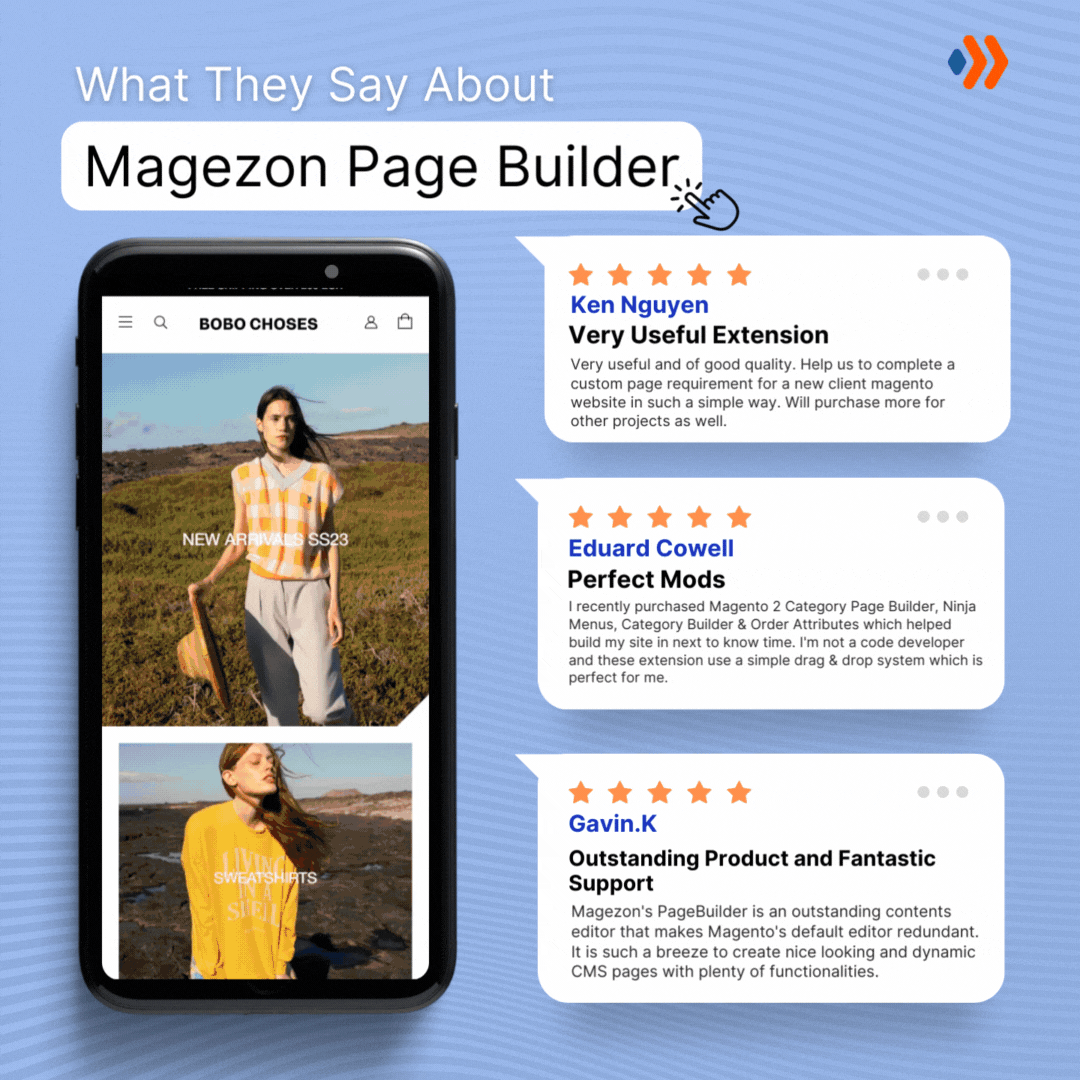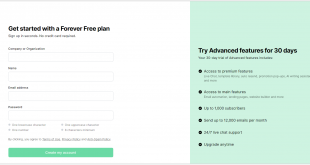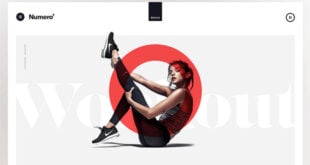
Product videos for eCommerce might decide the success or failure of a marketing campaign. Most customers indicate they were persuaded to buy products or use services primarily because of video content produced by the company. However, if you don’t make product videos that give valuable information in this increasingly crowded market, you risk missing out on many prospective buyers.
That’s why we came!
Here, you’ll learn all you need to make product videos for eCommerce, from what it is to how to create one. So, let’s get this party started!
Table of contents
What Is a Product Video?
A product video is a video that illustrates your product’s features and benefits.

A product video’s objective will vary depending on what type you’re making. Your video style will also be influenced by the product you’re promoting. For example, a software tutorial video will not be the same as an SUV walkthrough video. Regardless, creating these product videos is the same: to educate the potential customer on the product’s capabilities.
Why Should You Have Product Videos for eCommerce?
Statistics on Product Videos for eCommerce
Producing your eCommerce site’s video is no easy task. Equipment is pricey, and experts who know how to use it are even more expensive. Because of this, many eCommerce businesses will use pictures and graphics to get the job done.
These stats demonstrate that video marketing may be a worthwhile investment. Of course, you’ll have to dig a bit deeper at first, but you’ll get more than you bargained for in the long run.

1. To sell products and services, video is the No.1 kind of content
According to HubSpot’s Not Another State of Marketing report, polled marketers said that videos are the most popular type of content they make for their content marketing programs. For the first time, videos have surpassed blog posts.

2. More than half of marketers use video to promote their products
HubSpot also discovered that roughly one-quarter of marketers used product videos to promote their products, while nearly one-fifth used product demonstrations.
3. Visitors who view product videos are 73% more likely to make a buy
Did you aware that making videos for your items increases their chances of selling? There are many reasons for this, which we’ll discuss in more detail in the next section. The most crucial point is that product video demos for your items increase sales. That is the most significant statistic you need.

4. Up from 78% in 2015, 92% of marketers who use video say it’s an important part of their marketing strategy
According to the Wyzowl Survey, which asked marketers about their video strategies at the end of 2019, video is an important part of their marketing strategy. The number above is up from 78 percent in 2015. With a number like this, it’s almost certain that marketers find a helpful video worth the money they put into it.
5. 71% of customers prefer video marketing material over all other forms of advertising
Customers are more likely to buy from you if they understand what you’re selling. It’s easier to know when you see product videos for eCommerce.
6. Gen Z (87%) likes product endorsement videos or adverts
It’s no secret that Gen Z is one of the most technologically savvy and financially conscious groups globally. As they reach full buying potential, you’ll also want to bear in mind their buyer’s journey behavior.

Video advertising, demonstrations, unboxings, tutorials, or video reviews from influencers are most appealing to this age group.
7. In making a purchase, 55% of shoppers rely on video
While Gen Z is the generation that uses product video demos the most to investigate items, other age groups aren’t far behind. According to Google research from 2019, more than half of all ages use video to make shopping decisions.

Try FREE Magezon Page Builder!
Easily create your engaging Magento pages in any style whenever you want without relying on developers or designers, just by drag & drop.
What Can Product Videos Help Your Business?
1. Increasing Conversions
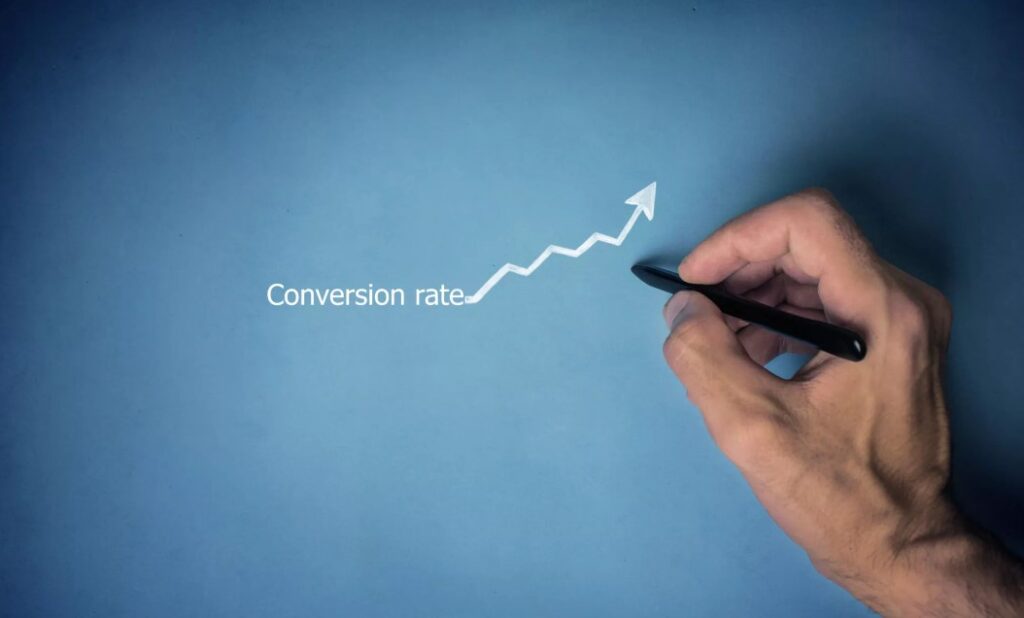
Ecommerce product videos do what photography cannot. They provide customers with more information about your products, allowing them to picture them better in real life.
How does it indeed appear? How does it work while it’s in use?
Some fabrics need better imagination (the way a dress twirls or leggings stretch). Some products are larger or smaller in person than they seem in photographs.
The inability to test a thing before buying is e-commerce’s biggest shortcoming. In other words, every time a person purchases anything, they take a calculated risk. As a result, videos with product features clearly presented are a great way to reduce that risk.
2. Increase the Average Order Value
When you plan out a strategy for your product videos for eCommerce, you may boost their effectiveness and enhance the average order value (AOV). In addition to increasing product sales, you can use your videos to show how different products work together.
Even if two products aren’t interdependent, having one in the background may help raise customer awareness of the other. For example, a model may wear jeans while promoting a sweater. Even if the customer isn’t particularly looking for jeans, knowing that the shop sells them may persuade them to check out the rest of the business’s pants selection.
3. To Build Brand Integrity
Even the most basic eCommerce product videos may increase sales, so we recommend you use your marketing money and resources on videos.
However, if you have the resources – even if it’s just a few creative minds – we strongly advise you to inject some personality into your videos.

Any interaction with your audience is an opportunity to develop brand sentiment and differentiate yourself from competitors. In addition, making product videos that demonstrate your authenticity may represent your business as genuine and unique—two qualities that surely increase trust and, yes, sales.
4. To Improve Your Google Rankings
Video content may also aid SEO, particularly if competitors have yet to capitalize on the video revolution. Google’s search results pages include a combination of media, such as blogs and video material. However, video is less competitive in certain aspects because it requires more work.
At the very least, it requires a different level of knowledge than the already too-crowded field of blogging.
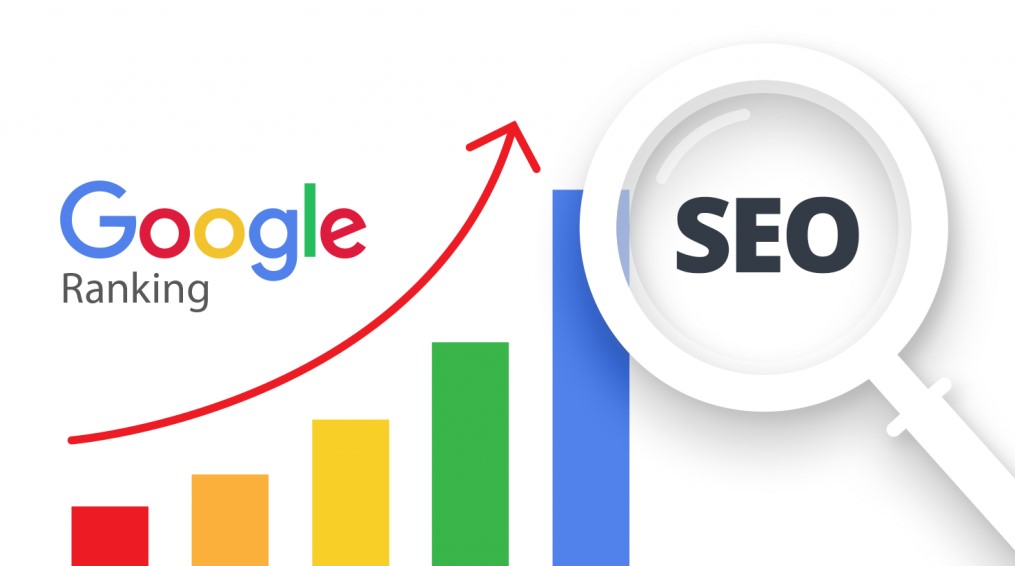
5. To Keep Users Engaged for a Longer Time
The video is viral. It grabs and keeps our attention. For many people, it is easier to absorb than text. For example, customers prefer to watch a product demo video that summarizes product specifications rather than read a description.
Customers have grown to anticipate a certain amount of high-quality visual content to engage their senses, whether it is a brilliant design, video, online animation, or all three.
Users are more engaged with video and spend more time on your product sites. Spending more time indicates a few things:
- Improved brand recall
- Increased probability of buying
- Higher SEO rankings
Eventually, one of the user-friendliness factors determining rank is time spent on a page.
6. To Lower Return Rates
Two essential components of a successful online business are allowing customers to return things and simplifying the returns procedure.
And as previously said, the inability to try it out before purchasing is the primary barrier to completing a purchase. Allowing returns gives customers a safety net that reduces the risk of purchasing.

That doesn’t imply you want customers to return their purchases. You must still earn money, and returns might be costly.
Including product demo videos on your product pages is an excellent method to help shoppers understand your product for what it is. The idea is to persuade people to purchase, but sometimes a video may also turn away customers if they notice something that isn’t in the images they’ve seen. While putting a customer off a product may seem counterintuitive, it will reduce return rates and save you money.
7. Help With Other Marketing Strategies
Although not all product videos for eCommerce are suitable to use outside of product pages, you may use some to support your marketing campaigns on other channels. For example, your video might add value to an email campaign or serve as a solid social post. On the other hand, social media platforms are becoming more video-centric and used to communicate with eCommerce customers.
8. Increase the Number of Clicks and Shares
Video is not only highly shareable but also on social media and even over email. Including a video in your marketing emails may increase click-through rates by over 200 percent. The more engaging, the better; videos are more attractive than photographs or text. More shares mean more clicks and visitors to your eCommerce site.

9. It’s a Virtual Demo
In-store displays are an excellent opportunity to engage with customers while marketing your product to a big audience. Because you can’t be everywhere at once, a virtual demo that comes directly to the workstations and sofas of prospects is a great thing. Almost 75% of buyers were more likely to buy a product if they could see a video that showed how to use it. Amazon specialist John Lawson, for example, began video marketing for his items in the early 2000s and watched his sales climb rapidly.
10. Remove Customer Uncertainty
People give money to Kickstarter projects without knowing whether or not they will get the merchandise. Why? Because the video was fascinating enough to convert them into a fan. Their doubts were dispelled when they learned about the product and the company.
11. Easier to Approach Young Audiences
There is little doubt that today’s millennials, generation Z, and even generation alpha are the driving force behind the economy. These younger generations embrace video content and digital marketing, thanks to platforms like Snapchat and Instagram stories. People aged 18 to 49 in the United States watch YouTube more than TV, and the platform now has over 1 billion users. So, your eCommerce business should avoid falling over the edge.


Try FREE Magezon Page Builder!
Easily create your engaging Magento pages in any style whenever you want without relying on developers or designers, just by drag & drop.
Product Videos Type and Examples
You can use many eCommerce product videos to get more people to buy on your product pages. However, before you start, you should consider the type of video you want to use.
In this part, you’ll learn about seven types of product videos that a company like yours may create on a shoestring budget. You will also learn to leverage video to increase reach and engagement by distributing it via other marketing platforms.
1. Simple Videos to Demonstrate the Product
The purpose of a product demo video is to showcase your product. These videos may be short or long, depending on the length of the product, but they always feature wide shots of the product and closeups. Showing a product’s functionality and how it appears while in use are the main objectives of these videos.
The length of a basic demo video is usually between 15 and 30 seconds. Introduction videos commonly use on-screen text rather than voiceovers or humans to convey their message. Alternatively, there may be no sound whatsoever.
2. Product Explainer Video
A product explainer video is like a product demo that goes into more detail. It can be as short as a minute or as long as several minutes, but it’s best to keep it under two minutes. A product explainer video aims to explain something in more detail about your product, like how it works, how to use it, or how to do something with it.
Almost all of these videos have sound, whether from someone in the video, a voice-over, or text on top of the video.
You might think a video showing how to do something would make more sense after a sale. But, even though you might want to put it there too, showing how to use some products ahead of time can be helpful.
Slack, although not typical eCommerce, also benefits from explainer videos that make customers understand their product before buying it.
3. Selection Advice Videos
Videos with advice on choosing are less common, but they can still be helpful in the right situation. This eCommerce video assists customers in deciding between several variations of the same product so that they purchase the correct one for their requirements.
To make it easier for customers to choose a product, the selection advice video lowers the risk of return by assuring customers receive exactly what they want.
4. Videos Unboxing
Unboxing videos are a web phenomenon with much promise in the retail world.
An unboxing video is when a person gets a product, usually from an online company, and films themselves unpacking it step by step. Viewers appreciate watching the unwrapping process because it is visually appealing. In addition, by having influencers unbox their items, marketers may reach out to previously untapped customers.
The quality of your packaging is critical to your success in this market.
Therefore, we recommend putting in the time and effort to make the experience memorable for purchasers and unboxing videos viewers. It demonstrates your regard for customers, indicates high-quality products, produces a unique customer experience, and encourages repeat business.
As discussed in this piece, you may also use unboxing videos to show off the quality of your products and establish customer expectations. Unboxing videos and user-generated content may help you achieve this goal (UGC).
Sharing these videos on social media is also a terrific idea.
5. Customer Testimonials
Video reviews, like written testimonials and reviews, boost customer trust in your items. The difference is that you can see an actual customer in the review videos; this fulfills many goals:
- Visitors understand that a buyer must genuinely enjoy your product to consent to a video review.
- Help visitors see the customer’s face and emotions, which increases the impact of the video.
Moreover, customer review videos may also serve as user-generated social media content.
6. Product Focus Video
To enhance the online buying experience, product-focus videos may be used in conjunction with or even in place of static photos. In other words, this form of product video for eCommerce is all about your products.
In many product-focus videos, the majority of the content is visual. So you should consider how you might provide a different viewpoint on your goods in a sound-free setting.
A product focus video may be approached in a variety of ways:
- Providing a three-dimensional representation of your product
- Demonstrating the appearance of your product outside of its packaging
- Representing product components graphically
- Customers will be captivated by a pleasing visual style, such as boomerang or stop-motion.
Freshpet, for example, made curiously gratifying stop-motion Product Videos emphasizing their offering’s new components.
7. How-to Video
The purpose of How-To videos is to communicate how to use the product step by step. You may use How-To videos to emphasize the components and show how the product may assist your customers in their real life.
You can use How-To videos on PDPs and other pages of your website, such as a FAQ page. Conversely, you may send the same video through email to those who have bought your products.
If possible, you should use a real person for a better atmosphere. If not, animation video production or motion graphics are good ways to simplify a complex how-to procedure.
Essential Tips to Make Your Product Videos Effective
1. Context Is Everything
Don’t simply show off how excellent your product is; you should illustrate how it fits into your customers’ lives. Hence, in your product video, try to address the following questions:
- What issue does your product address?
- How does it improve the lives of your customers?
- Is it motivating the customer to do more?
- Will this product make them happier in general?

2. Show and Tell
A high-concept product video for eCommerce may be beautiful and elegant, but if viewers can’t understand what you’re saying by the end, they’re unlikely to become customers.
Pretend you’re in first grade and doing “Show and Tell” – show your products and tell your customers about them. It’s as easy as that.
Here are the types of videos used by both small and large eCommerce businesses that you can apply:
- Demo: Simply, a demo shows the product in use.
- Explainer: Using a combination of audio and text, an explainer video explains how a product works and conveys the story behind your brand. In other words, explainer videos persuade people to buy.
- Tutorial: These videos are informative, with step-by-step directions. Instead of solely a marketing tool, tutorial videos might address those who have already paid and want assistance if they have a complicated product. You can see the examples in the previous section.
3. Tell Your Story – or Let Your Customers Tell It for You
When customers watch a product video, they aren’t only interested in its technical specifications. They want to meet the people who created the product.
Customers are wiser, and they will not pick a company that only tries to sell its products.
The most important tip is to use your product video or demo to explain your company’s existence. Then, respond to some critical questions. For example, does your company:
- Collaborate with social justice initiatives?
- Share your profits with community organizations?
- Use social media to educate your audience about social issues?
- Take actions to protect the environment sustainably, such as eliminating single-use plastics or being carbon neutral?
In other terms, show that you care for others.
You can use raving quotes that take up a single frame of your product videos for eCommerce, or they can be a talking interview on how your product or service changed the game.

4. Customize
Because your eCommerce product videos serve as advertising and the first impression for your product/service, looks are essential. This means a shaky video or poor photographs may (and will) contribute to a drop in product sales.
On the other hand, your product video may be used as a Facebook ad or linked to your eCommerce website; you should be satisfied with the final edit.
5. Make Sure You’re Catering to Your Target Audience
When bands go on tour, they commonly sing the city’s name in their songs. In your eCommerce product videos, we advise you to do the same.
To reach a specific demographic or geographic area, you should customize your product video to be relevant to your target audience.
6. Do Not Encourage FOMO
Attempting to terrify people into buying your stuff by screaming FOMO or the fear of missing out is something you must not do.
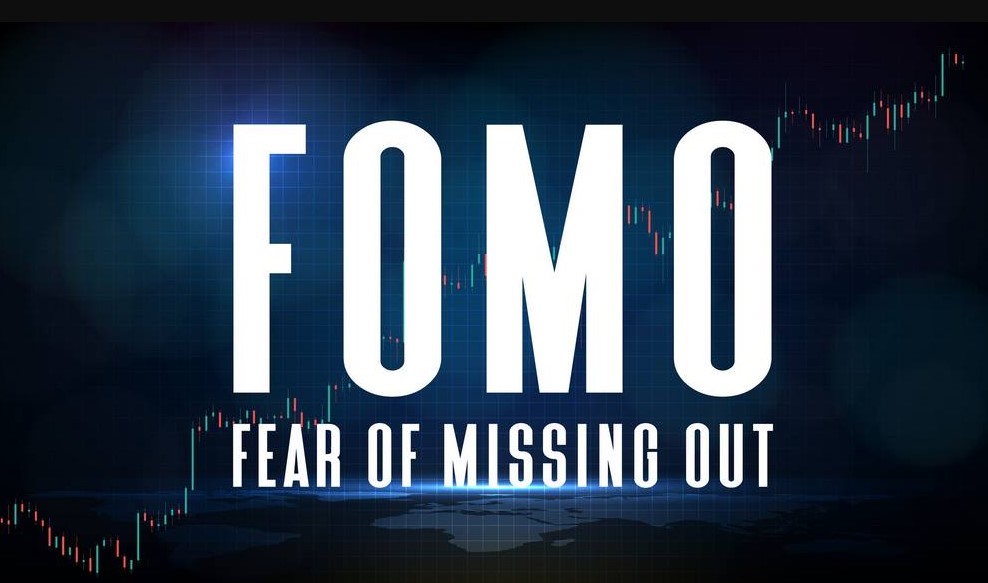
Businesses that show the consequences of not purchasing their goods too much use fear as a cheap method to encourage customers to buy. In your product videos for eCommerce, a great company like yours should emphasize the advantages of your product/service rather than scare tactics.
7. Add Some Personality
Don’t hesitate to express your brand’s identity with your best product video. Displaying your brand is an excellent approach to distinguishing your product from millions of similar items.
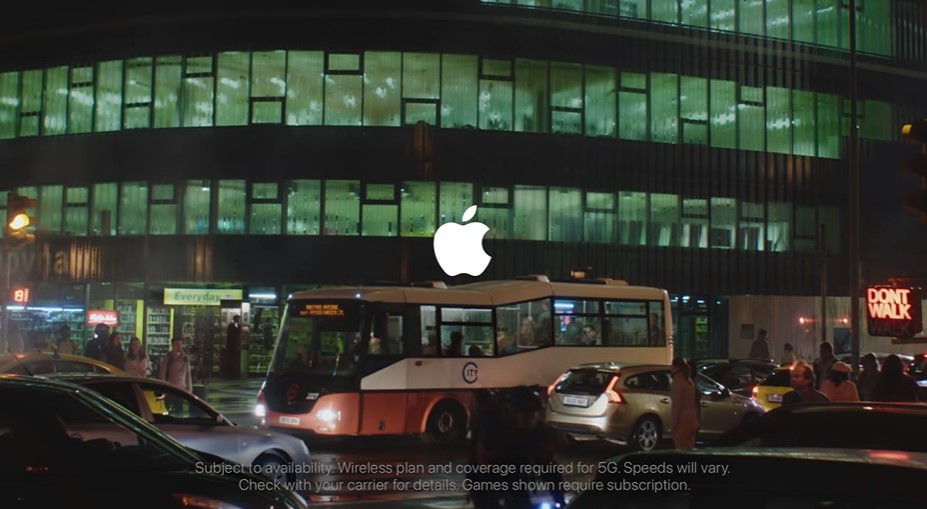
8. A Call to Action Should Be Included so That Customers Know Where and How to Purchase
When the video ends, customers must know there’s a simple way to buy your products or service. How? Include the following steps or destination in your call to action.
If a potential buyer makes it through your three-minute shoe demonstration, they’re likely to be interested in purchasing that particular model of shoe later on.
9. Human to Human Interaction
In a commercial video, it’s easy to talk to your audience rather than at them. However, since your objective is to initiate a discussion with a possible customer, make every effort to establish rapport with the person on the other side of the screen.
10. Choose the Best Channels to Market Your Video
Making videos is just half of the job. The other half is to convince people to watch them. So decide where and how you want to share and host your product demo video by looking at your aims.

There are some channels you should use:
- Your website homepage
- A landing page
- Social media platforms like YouTube, Facebook, Instagram, or TikTok
- Email newsletters
You’ll want to post your product video on numerous platforms to get the most out of your product video. Product video demos can be shared on social media and Youtube channels to bring traffic to the store.

Try FREE Magezon Page Builder!
Easily create your engaging Magento pages in any style whenever you want without relying on developers or designers, just by drag & drop.
How to Shoot Your Product Videos for eCommerce?
Let’s find out how to make eCommerce product videos that will amaze your audience in this part.
1. Get Inspired
Do you remember the commercials, social media ads, and product videos of your favorite products you’ve seen before? Which ones are the most memorable? Why?
Rewatch them or write down what you remember to get inspiration.
2. Create a Video Plan
Apply the lessons learned in step one to your video. Your video should address all three phases of the sales funnel: awareness, consideration, and decision. You may use it to target your ideal demographic in various marketing and advertising campaigns.
Who are your target audiences? Ideally, you may want to cast people who look or act like them in your video.
3. Draft Your Video
Plan your video’s storyline and technical aspects. Do you need a standard e-commerce video that tackles a customer’s problem and promotes your product as the answer or a lifestyle video? The plots for each of them vary additionally.

Begin to think about what scenes you need to include and if you’ll need actors, customers, or b-roll film for them. Then, look at the formatting and size specifications for any advertising channels you plan to use.
4. Decide on the Person Who Will Record Your Video
You should hire a video and marketing expert from a company specializing in both fields. You’re more likely to get a demo that you’ll be satisfied with if you work with a professional on the first try.
Purchase the necessary equipment if you plan on filming your eCommerce product videos on your own. The following is what we recommend:
- Two DSLR cameras (one should have a zoom lens)
- Tripod
- Portable digital recorder
- Lavalier microphone

5. Create a Shot List
To begin, create a storyboard from your video’s underlying plot. Then, develop a shot list for every video frame that lays down exactly what’s going on at any given time. Record the camera and lens you’ll be using, the subject matter you’ll be capturing, and the estimated time it will take for each shot.
6. Schedule a Video Shoot
Using your shot list, develop a plan that will enable you to be as productive as possible on the day of the shoot while still allowing you to get in all the essential photos (just in case you run out of time).
7. Make Plans and Pack
Give everyone on your crew a job before the shoot, whether getting coffee, coordinating the talent, or taking the shots.

The day before your shoot, ensure you have everything ready and bring extras if possible. Double-check that you’ve packed everything.
8. Editing
Take note of any clips you may wish to use after reviewing your video. After that, sync the audio and video for all of the clips you’ve saved and assemble them into scenes to tell the story of your product.
Use music and sound effects to acquaint customers with your brand’s tone. Both AudioJungle and PremiumBeat provide royalty-free music, and they’re excellent options.
9. Finish the Video and View It One Last Time
Are you satisfied with how it tells the story and accomplishes the objectives you laid forth in step two? How much can you leave a way to make it even more concise? Shorter videos are more likely to capture viewers’ attention.
10. Add Final Details
Ensure that all transitions and color adjustments are completed. There should be a call to action in your video. As far as product videos are concerned, a simple “Buy Now” or “Shop Now” is always an excellent option.
Effective Strategies for Your Product Videos Campaign
Are you ready to produce high-quality eCommerce product videos that will leave a lasting impression on your customers? Make your content popular in 2022 by using these best product video techniques.
1. For the Product Unpacking, Go Live
There has been a noticeable increase in the popularity of live video over the previous several years, and this is predicted to continue. So if you haven’t had this type of video already, this is the best moment to get started. You can generate interest in your goods by combining product reviews with unboxing videos.

On Live videos, product unboxing may help you build a more realistic brand image. In addition, live Q&A sessions allow viewers to get answers to their questions directly from the content provider.
2. Give a Behind-the-scenes Tour of Your Office or Manufacturing Facility
Sharing a behind-the-scenes video of your product development stage is another great way to generate curiosity. You may also take your audience virtual tour of your workplace or office to humanize your brand. You may talk about your brand principles or do short interviews with those who worked on your product to explain why it was made.
3. Seek Product Reviews From Micro-Influencers
With 5,000 to 20,000 followers, micro-influencers can develop deeper audience relationships. Although the number may vary depending on the platform, statistics show that micro-influencers have greater engagement rates than mega-influencers. Collaborating with these influencers for product evaluations can expose your brand to their audience and boost the likelihood of good feedback for your product.

4. Distribute Teasers Before the Debut of a New Product
Teaser trailers have the power to pique viewers’ curiosity about your next product launch. The teaser should be brief (between 5 and 30 seconds) and include high-quality information. They might be as simple as a ‘coming soon’ slide with the product name, or they could be a few seconds longer with product images.
Conclusion
Eventually, it takes time and money to create and produce product videos for eCommerce, and maybe more if you want to promote it elsewhere. It is completely worth investing in! Nowadays, online purchasing is popular, but trusting a new shop is always difficult. Using product videos for eCommerce allows you to break through that barrier and get more customers.
If you are a Magento merchant and don’t know which extension to build your website, consider Page Builder from Magezon. As a trusted Adobe partner, we have satisfied thousands of customers with a vast collection of drag-and-drop extensions, helping you create a high-converting and unique store in minutes.
Don’t take my words for granted; see how your website can be with Magezon Page Builder and what others say about us:
 Magezon Blog Help Merchants Build Comprehensive eCommerce Websites
Magezon Blog Help Merchants Build Comprehensive eCommerce Websites

